After 10 games in the EFL League Two this season, Leyton Orient found themselves top of the league. While that itself is impressive, the manner in which they achieved this feat is trumps that – the London club went unbeaten in those 10 games, winning nine, and conceding just 4 goals. As a result, they set a new record for the best start ever made in the English fourth tier after 10 matches. However, matchday 11 saw Newport County put an end to Orient’s incredible run with a 2-1 win. Despite this defeat, Richie Wellens’ side remain first in League Two.
This scout report will provide a tactical analysis of Wellens’ team so far this campaign, providing insight into how their pressing has influenced their impressive defensive record, along with an analysis of key factors within their attacking approach, like off-the-ball movement for example, that has seen them become the second top-scorers in the division at the time of writing. There will also be an analysis of how Orient operate in midfield when the opposition has the ball as well as a look at Wellens’ overall tactics.
Manager overview & team formations
Boss Richie Wellens has had a mixed managerial career so far in terms of success following his retirement as a player in 2017. As a player, Wellens came through the ranks at Manchester United, and enjoyed a successful career with spells at Doncaster Rovers, Leicester City, Blackpool, and more, playing as high as the EFL Championship. He operated as a midfielder who became known for his well-rounded game, often becoming a fan favourite at any club he played for.
His first managerial job came at Oldham Athletic – an unsuccessful stint where he was dismissed following relegation. From there, mixed fortunes have come and gone – from winning the League Two title with Swindon Town in 2018/19 to being sacked by Doncaster Rovers in December of 2021 following a poor run of form that left Doncaster in the frame for relegation. He seems to have rediscovered a winning formula at Leyton Orient, playing a visually attractive, fluid style of attacking football. Below is a visual that shows us the formations he has deployed this season at the O’s.
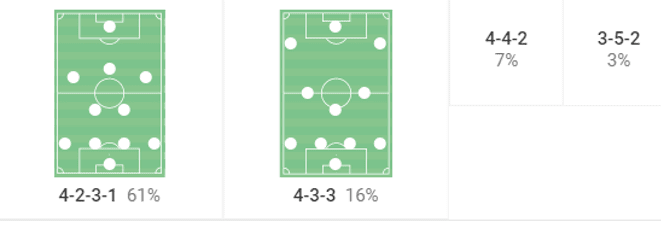
4-2-3-1 and 4-3-3 share some similarities in shape, which is why we see many teams alternating between the two. 4-2-3-1 offers good stability in midfield which also provides strong protection for the back four, while the wingers will bring a positive attacking presence. 4-3-3 puts more of a focus on the two further forward midfielders in terms of creativity, with the deeper midfielder taking the reigns for most of the defensive responsibility.
They have also deployed either a 4-4-2 or 3-5-2 on occasion – 10% of this season to be exact. These moments would have been tactical decisions to match the opponent’s approach or as an act of game management.
Playing through midfield
One of Leyton Orient’s key aspects of their approach in possession is progressing the ball through the midfield area – often with fluidity and speed. The players seem to have a strong understanding of Richie Wellens instructions and vision of tactics, allowing them to move the ball through the thirds into an attacking situation. This segment looks at some examples of this that highlight the key tactics and elements involved.
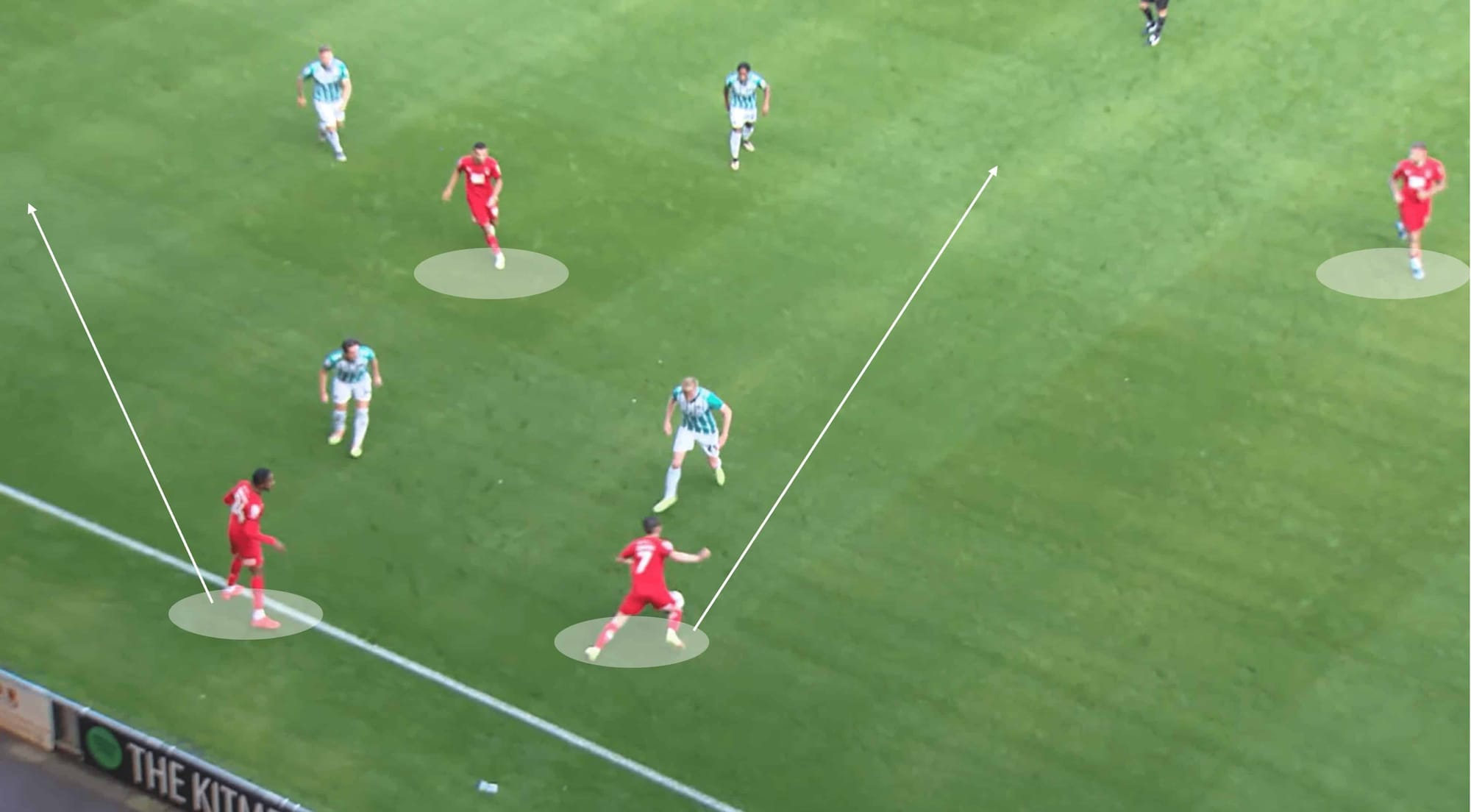
This first image not only highlights Orient’s positioning and support to the man on the ball (Paul Smyth), but it also gives us a flavour of Smyth’s ability and contribution. Having collected the ball on the left flank with heavy opposition presence close by, Smyth knows he must either go backwards or find an alternative route forward. The three close options to Smyth are well positioned, even if none of them are yet to be involved in the phase as it gives the opposition an incentive to send players out to apply pressure/mark those options. The notable option is that the Orient left-back, Jayden Sweeney, starts to make a run down the left flank, which, as we will see further in the analysis, is a key part of this attack.
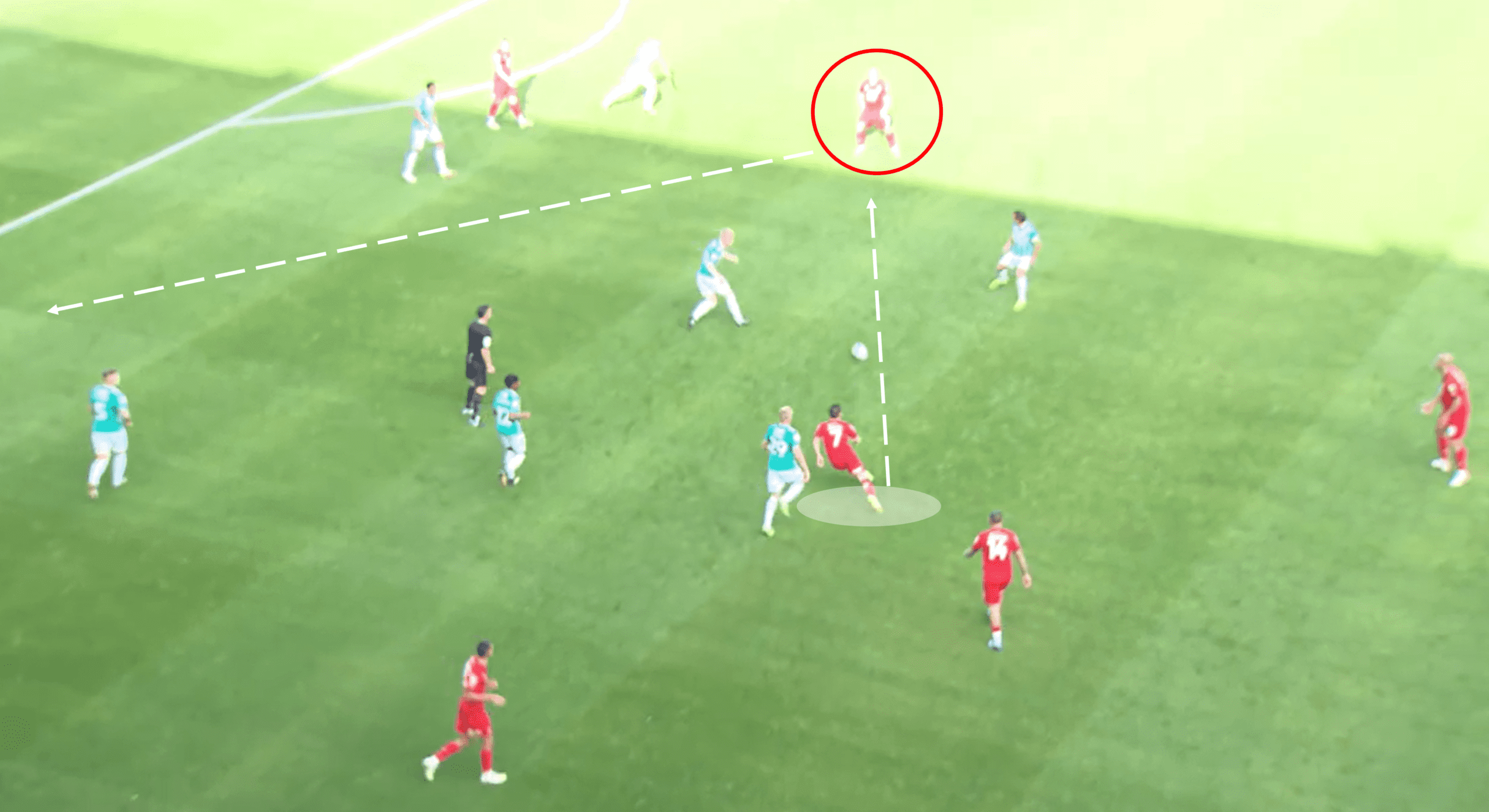
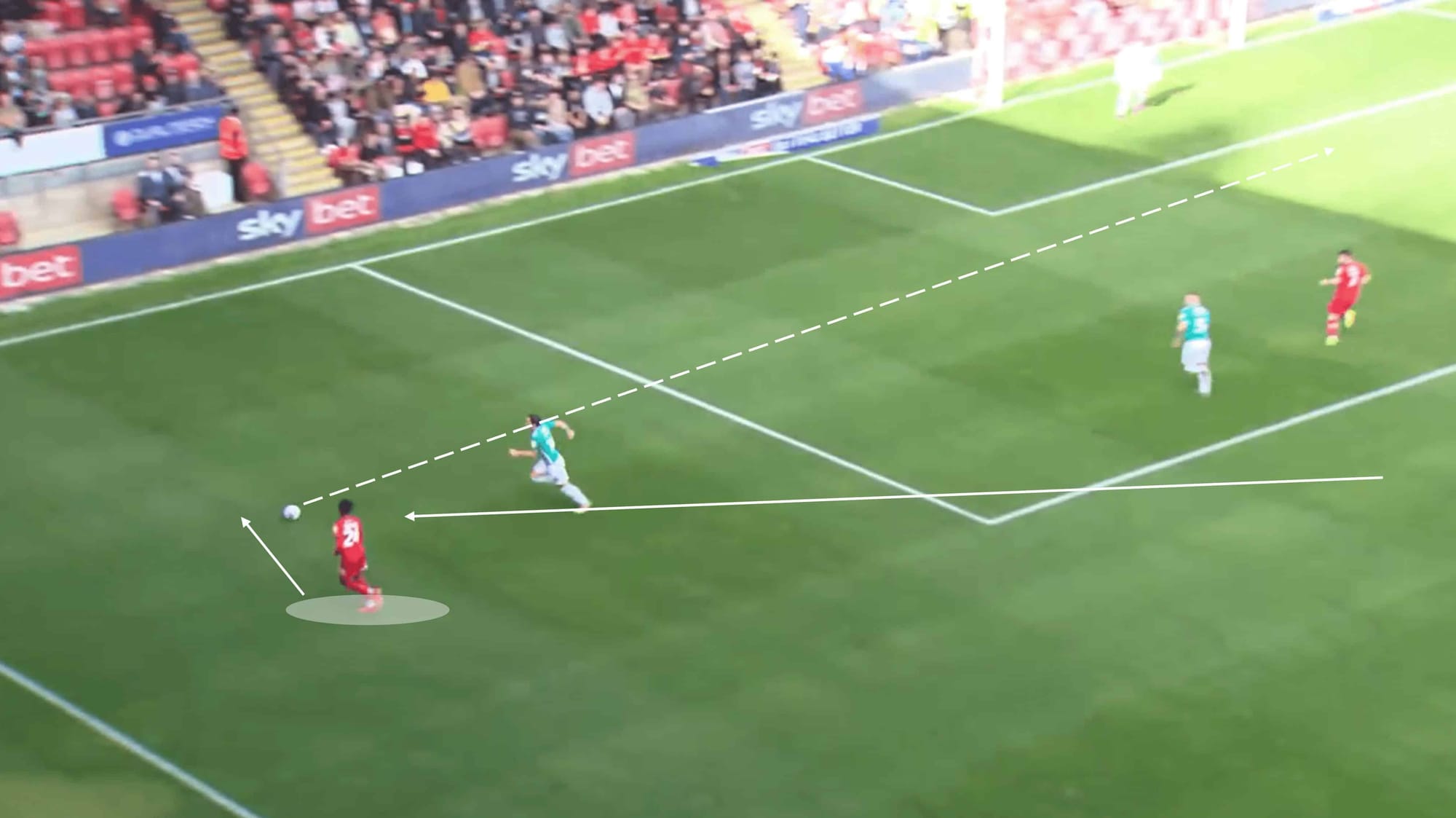
The attack continued with Smyth driving inside with good agility and speed before releasing the ball to a central teammate, who picked up a nice position – unmarked with a good body position that allowed him to execute his next move. As the ball reached him, he unleashed a first-time pass into space on the left flank which was met by the aforementioned run by Sweeney. It is also worth noting that after making his path, Smyth made a supporting run inside the box to add more attacking presence.
Movement is a key factor that Wellens has drilled into his players, heavily implementing it into his tactics.
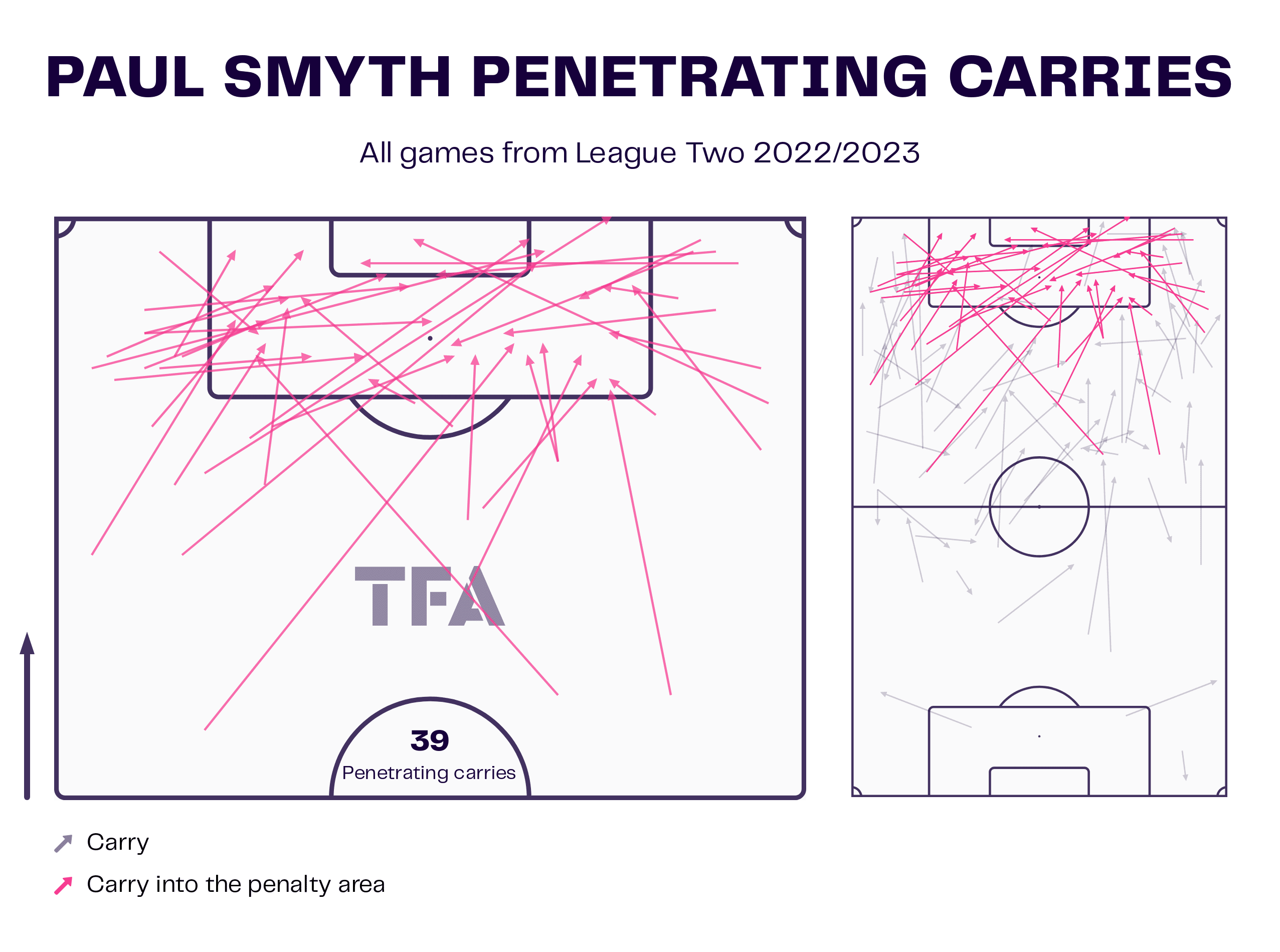
Smyth may be one of the best dribblers in the entire division, carrying the ball with agility and speed, often looking like he’s gliding across the pitch with the ball. The visual above gives us a clearer idea of his ability on the ball. An impressive 39 penetrating carries so far this season shows that he has the confidence to drive forward, and the attributes to carry the ball over long or short distances.
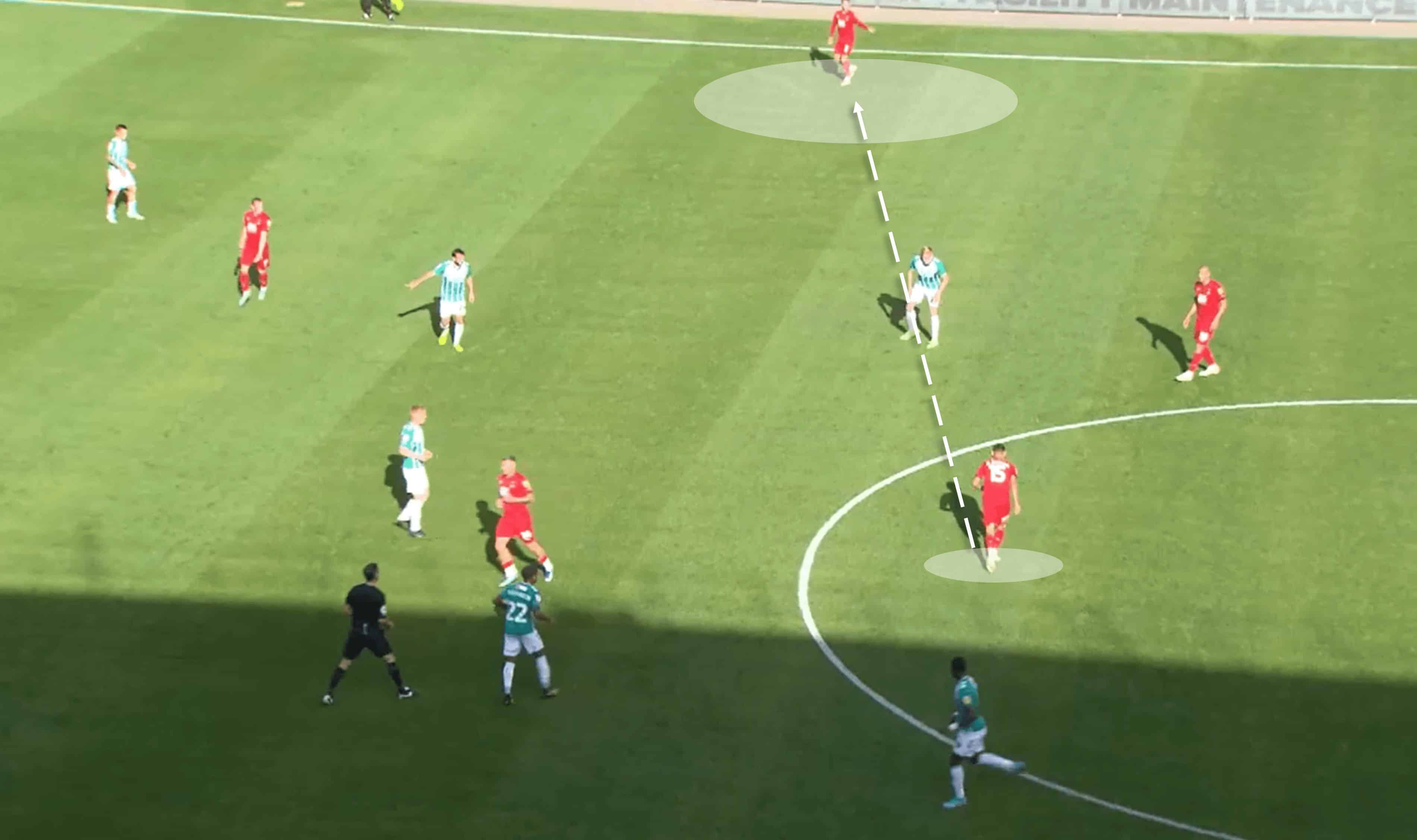
This next example sees Orient utilising the full width of the pitch to aid their attack. With little pressure on Idris El Mizouni, he is free to select his next move and makes his decision quickly – a lofted pass out to the right flank, where there is plenty of space as the opposition seemed to focus their defensive efforts on blocking central areas.
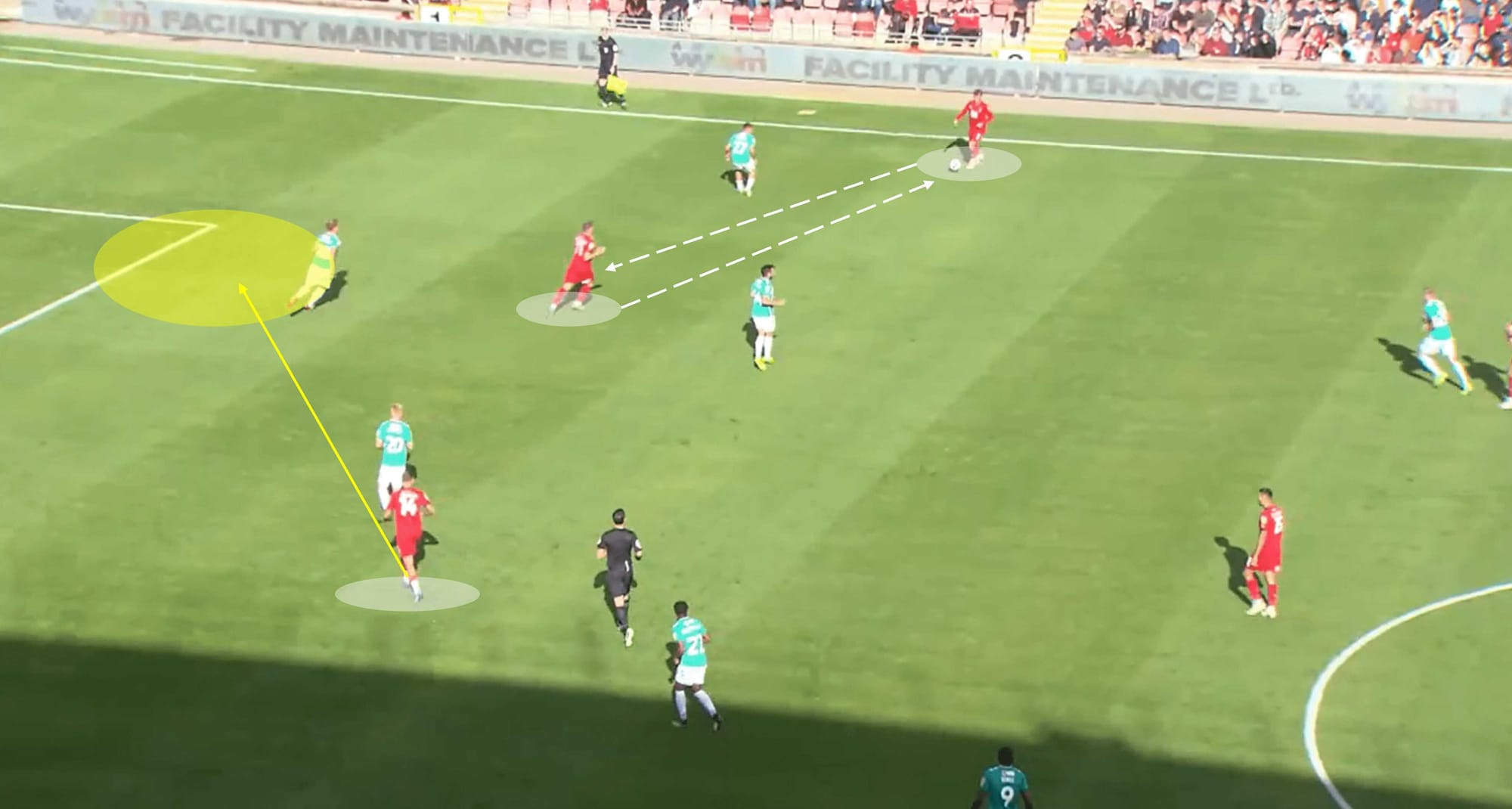
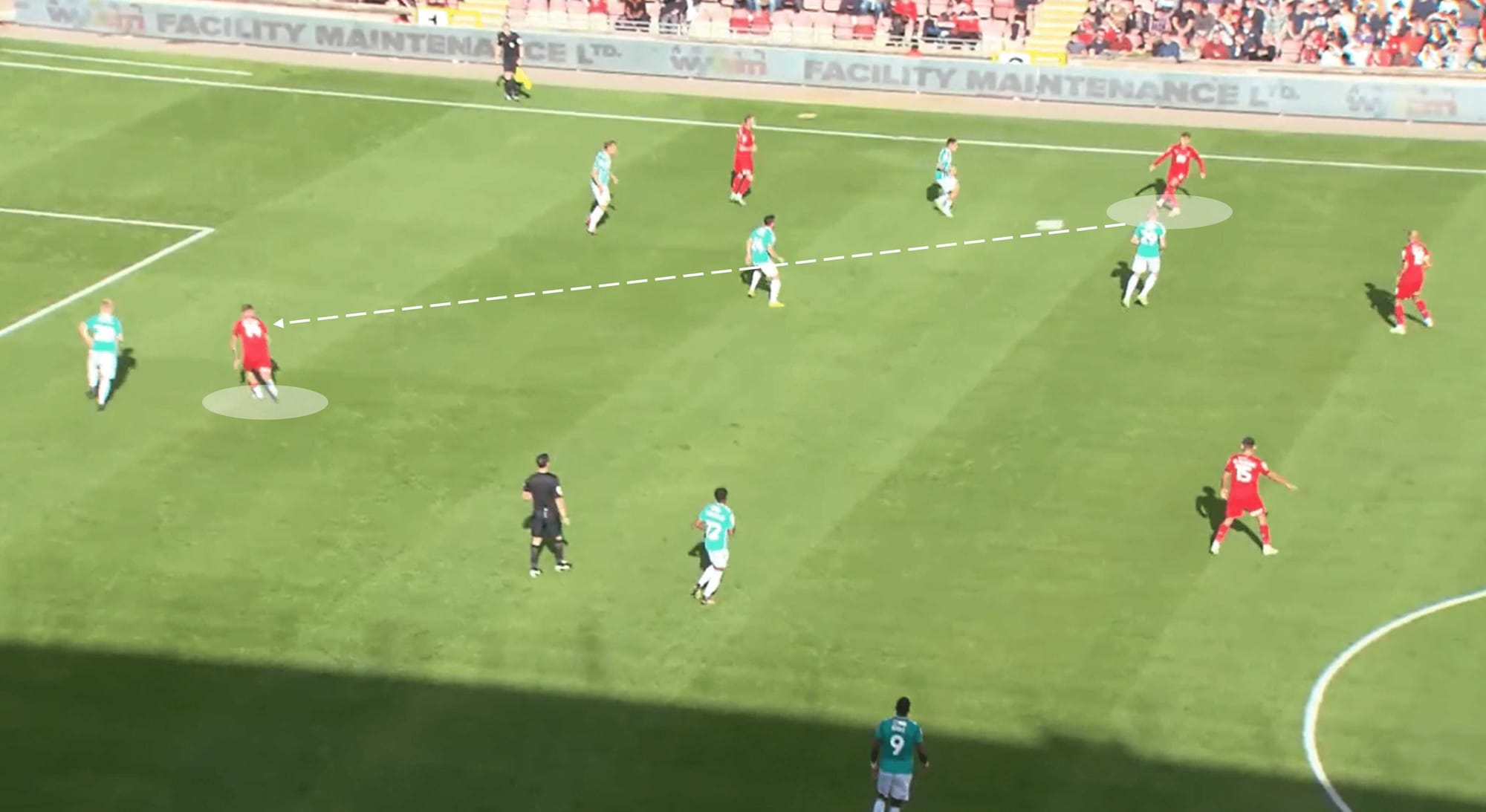
The unfolding of the rest of the move really shows us the work Richie Wellens and co have put in on the training ground. The Orient man with the ball on the right flank plays a bounced one-two combination to occupy nearby opposition, while a third-man run is being made by George Moncur, who looks to break into space between the opposition left-back and centre-back.
Moncur then receives the ball, showing good composure and a good idea of his next move, as he awaits for support which then allows his side to attack wide areas deep in the attacking third. So far this season, Orient have an average of 13.09 shots per 90, with the league average being 7.91 – indicating that they create a high volume of chances, with those chances often being a result of this type of build-up play.
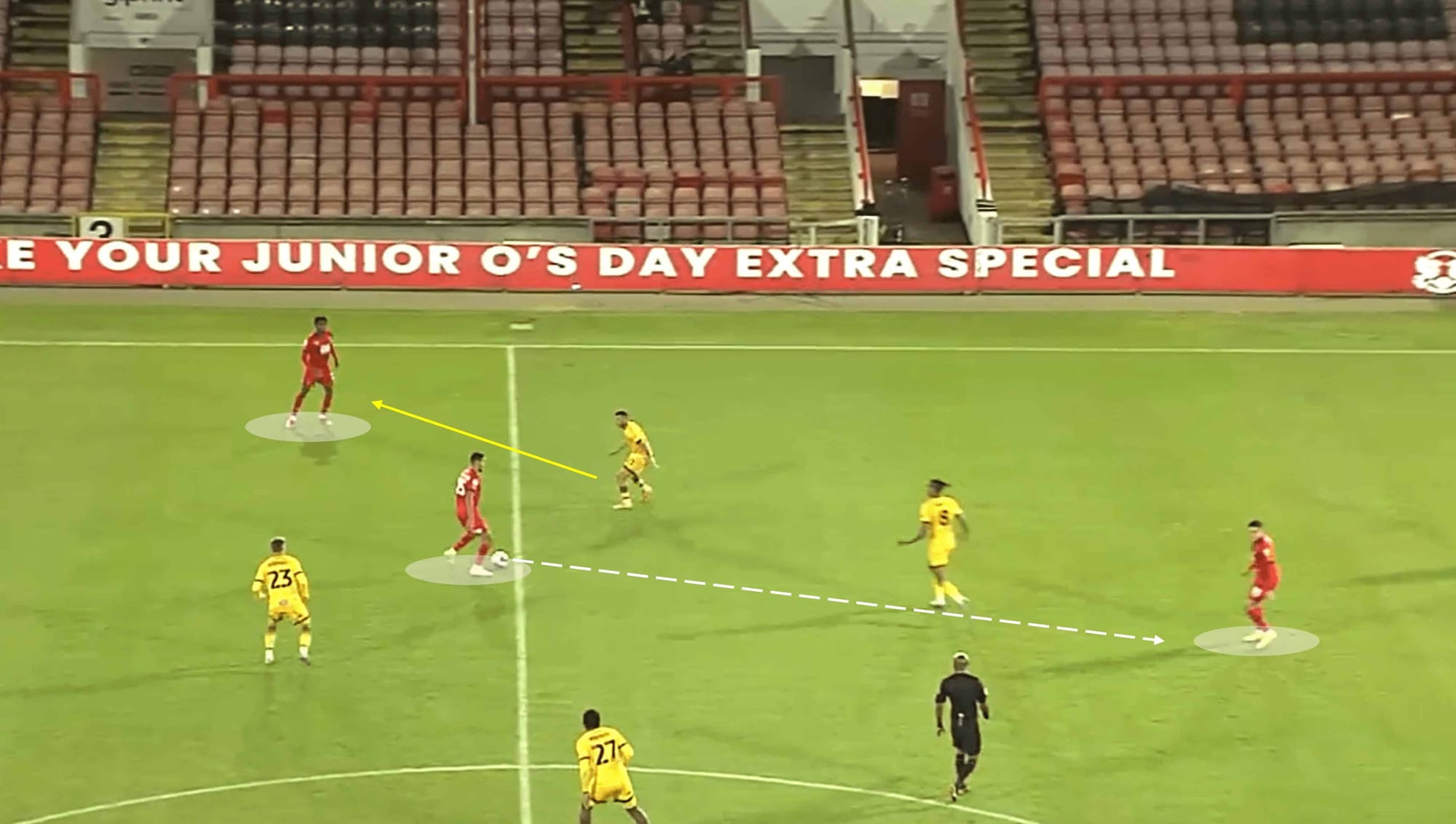
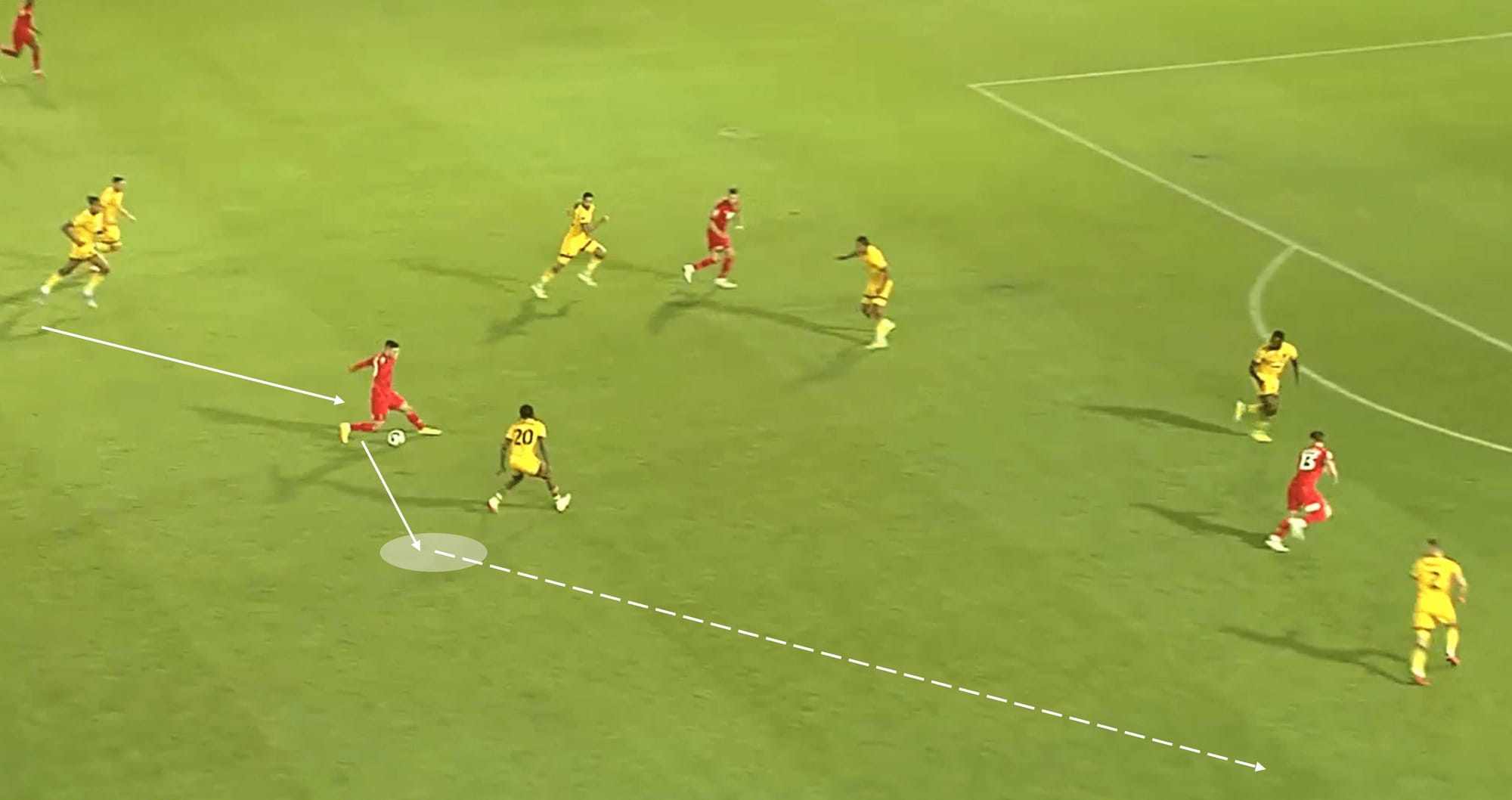
Here we have another example of Orient halfway line possession into a dangerous attacking opportunity with speed. It is also another example of their ability to exploit small pockets of space and move possession through them. As the first pass is being played into Moncur, you can see him scanning the area to his left as this is his intended route of travel, and notices that there is little opposition presence.
His quick burst forward moves the ball past initial pressure causing an opponent to force Moncur to slow his run, but the attacking midfielder used good control to shift direction before displaying good vision to sweep the ball out wide.
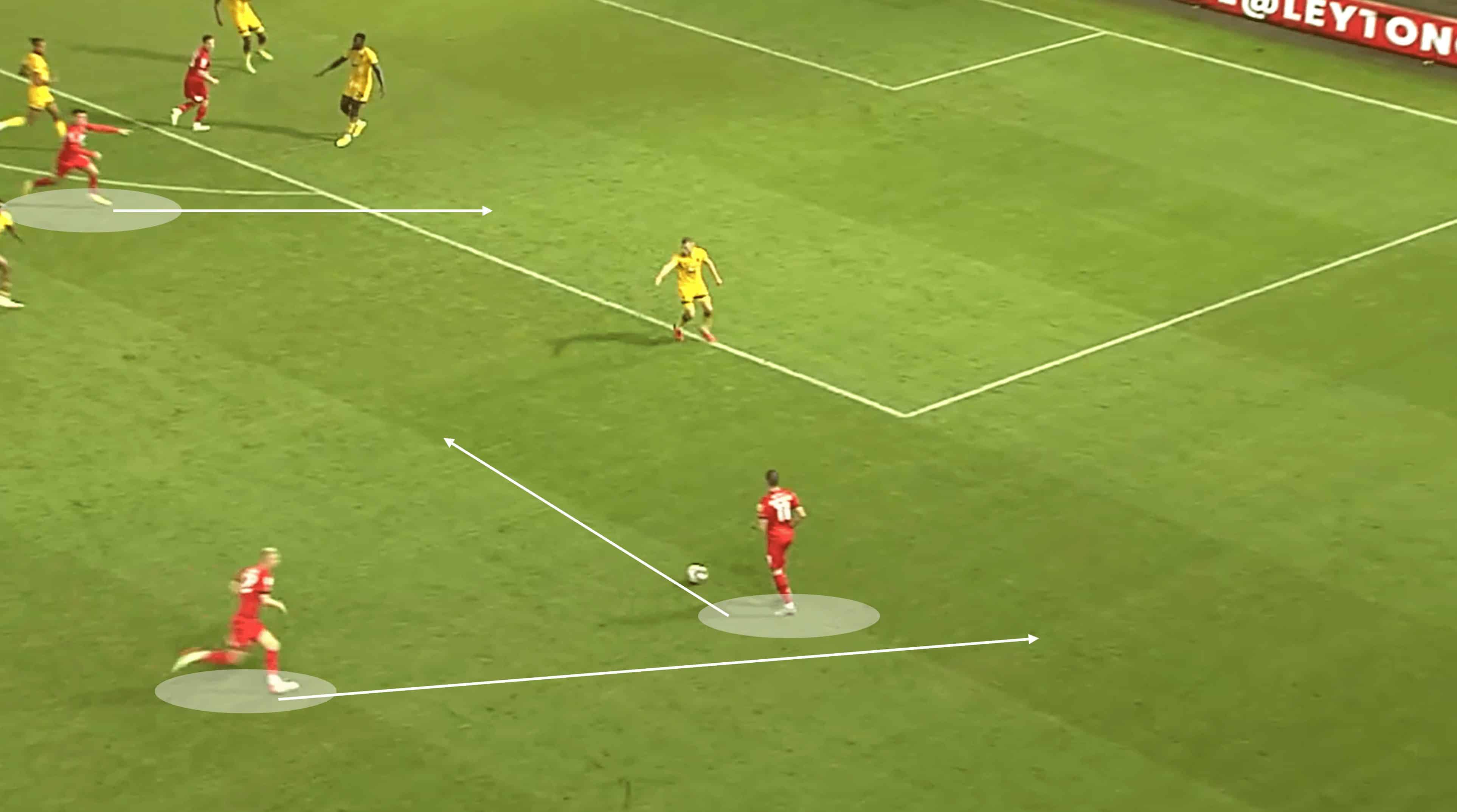
The ball reached its target over on the right flank and the move culminated with a long shot from the same player who received the ball, which was actually slightly disappointing, considering the movement that took place from nearby teammates. Moncur was involved again, this time making a bursting run across the face of the defensive unit, looking to break into space between the centre-back and left-back.
The right full-back was also involved, making a good overlapping run – this run should have been used to more effect by the man on the ball, Theo Archibald, especially considering they had a two vs one situation on that flank.
Pressing
An energetic team in possession, and an energetic team without the ball too, Leyton Orient look to give their opponent no time to breathe. When planned and executed correctly, pressing is an art form, and as the analysis below will show, Orient have become quite the artists. They have a good ability to know when and where to press, who presses and who covers space – below, we take a look at it in more depth.
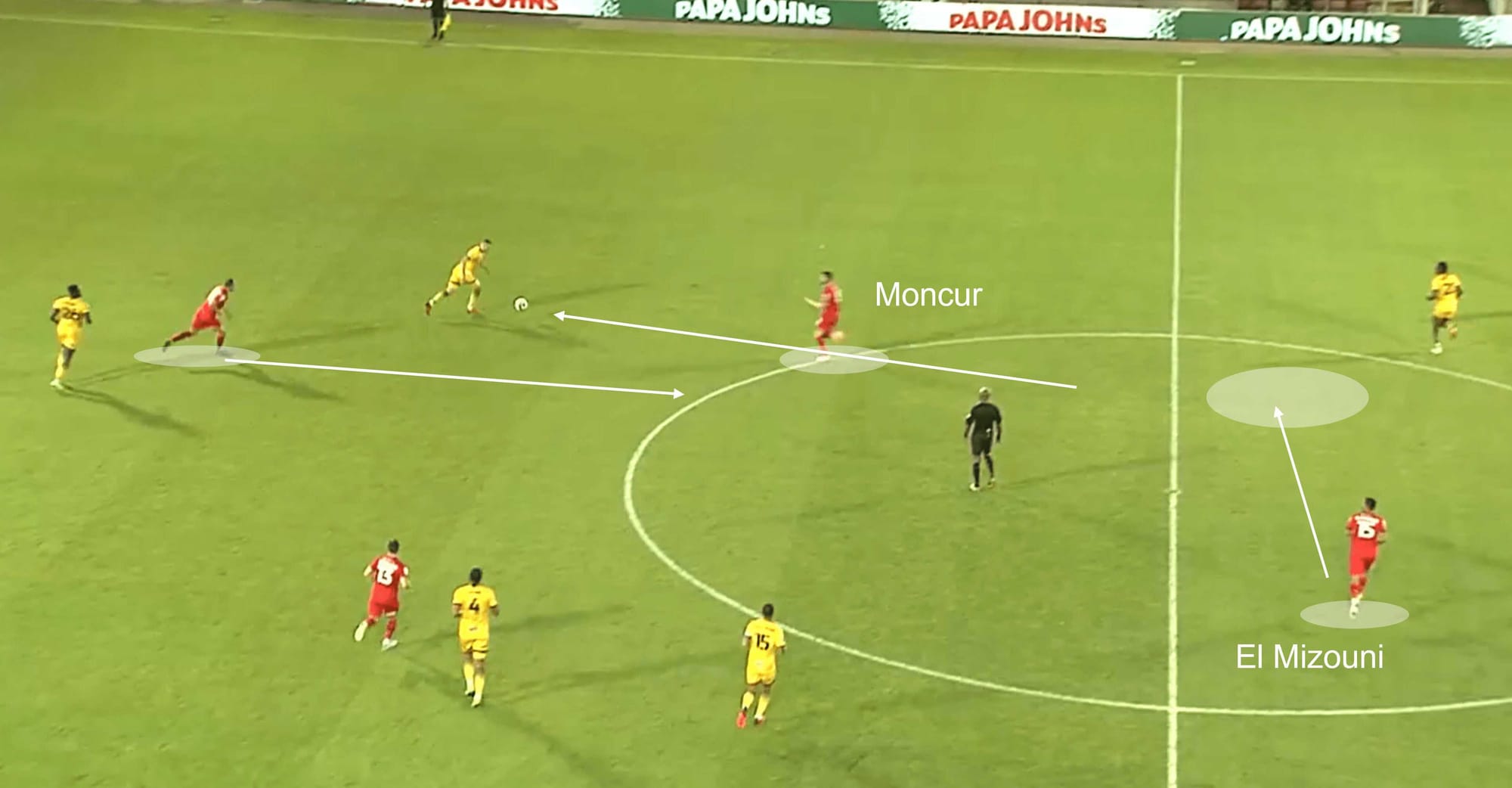
This first example occurred just moments after a transition and quick phases of play, hence the lack of shape and structure by both teams. The highlighted Orient forward, who is further forward for his side, applied the initial press to the CB close to him before the ball found another yellow shirt. Moncur sensed both danger and opportunity which caused him to rush out of his midfield unit to press the opponent, but it is the reaction of his teammates that is the impressive part.
The striker gives his all to make a run back towards the area Moncur had just vacated to add depth in midfield, while CM El Mizouni drifted across to the fill gap left deeper – both of these actions minimized the risk of Moncur’s press.
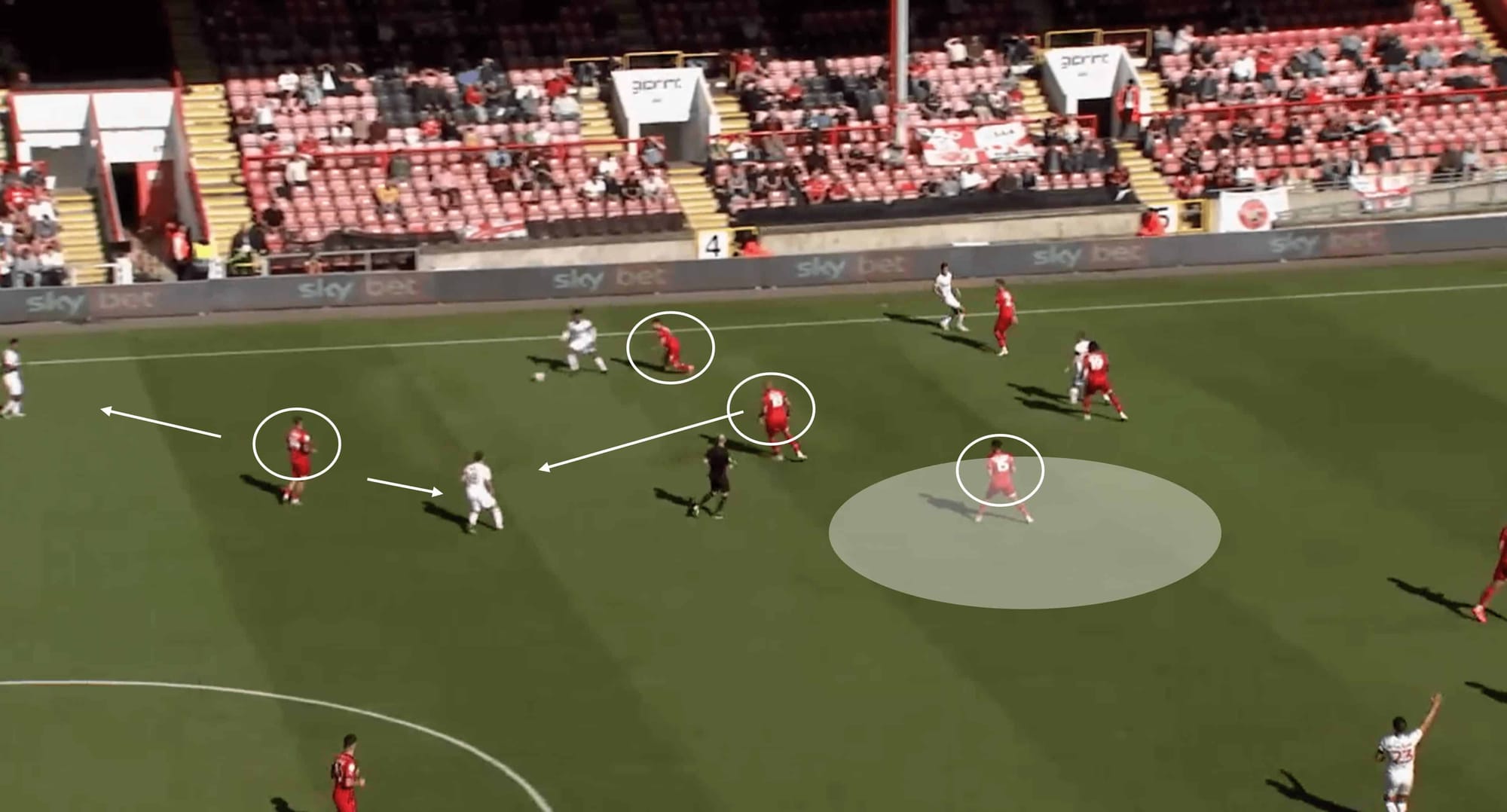
Here we see an Orient press with more of a defensive structure and presence. The man closest to the opposition in possession applies the press, forcing his man back towards his own goal – this acts as a trigger for two things – the nearby midfielders to squeeze and get closer to opposition passing options, and the Orient backline to step up the pitch slightly. Veteran Darren Pratley takes up a good position that supports the man pressing and forces the opposition back even more, while his CDM partner El Mizouni lingers behind to cover the space.
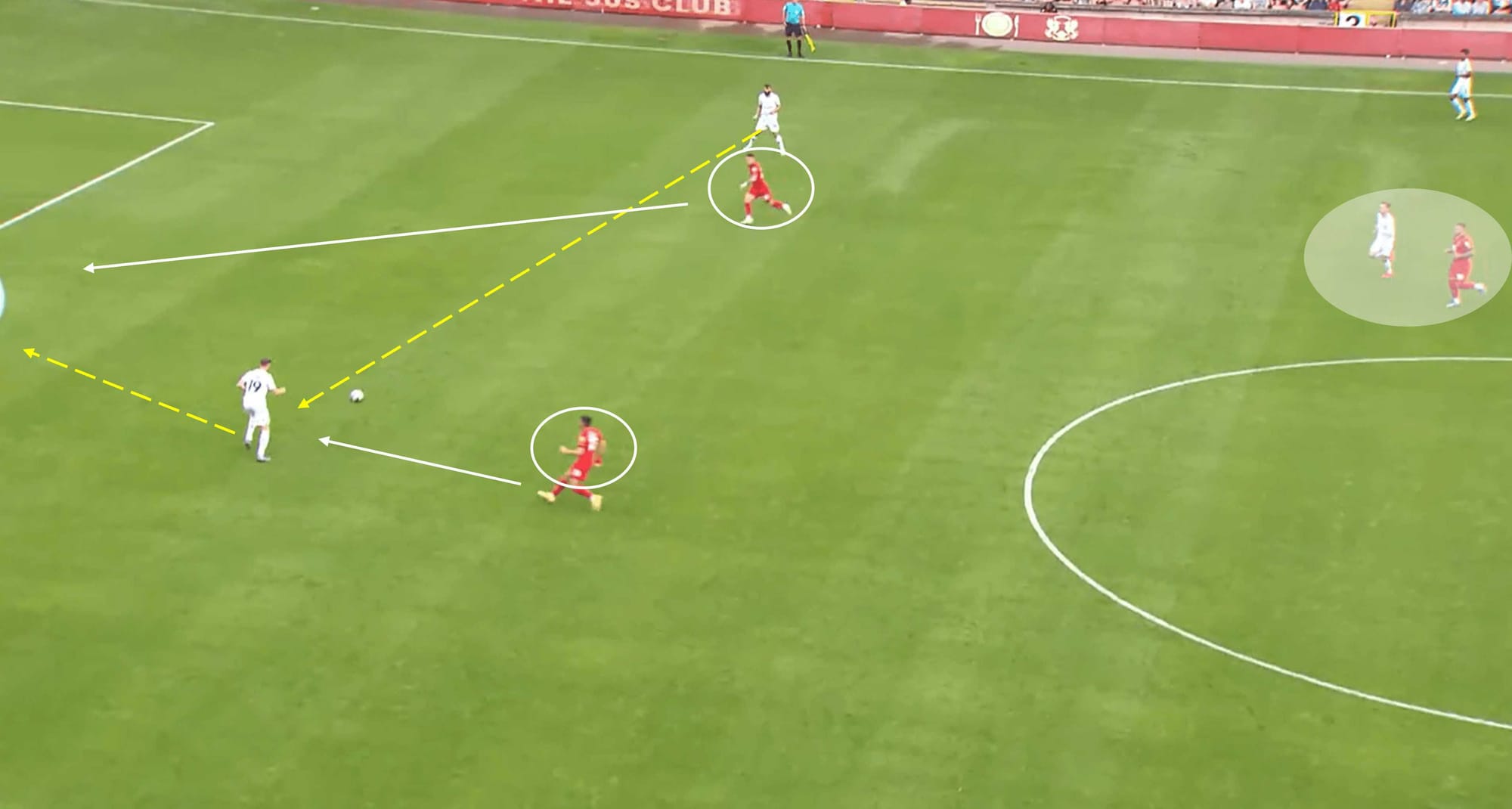
As we can now start to understand, Orient like to give little time to the opposition when they have possession in their own half. The example above is an interesting one, as the shape of the opposition indicates an intention to play out from the back – the split centre-backs with high and wide full-backs is often the catalyst of a team playing through the thirds, or at least looking to build possession in wide areas.
Orient’s individual marking outside of the shot is important to the success of this press, but it ultimately comes down to the action of the three men that are highlighted. Starting with the midfielder – he is simply staying within close proximity to the opposition next to him, which essentially eliminates him as a passing option – if the pass is played to him then there is a high possibility of snatching the ball from him and launching a counterattack.
In the shot above, the ball is travelling from the LCB to the RCB, after pressure was first placed on the LCB, forcing the pass to his defensive partner. As the ball makes its way to him, though, more pressure is being applied to the recipient of the ball, which in turn forces him to play a backwards pass to his keeper. To finish the press, pressure is applied to the keeper who is forced to play a long ball which ultimately results in a turnover in possession.
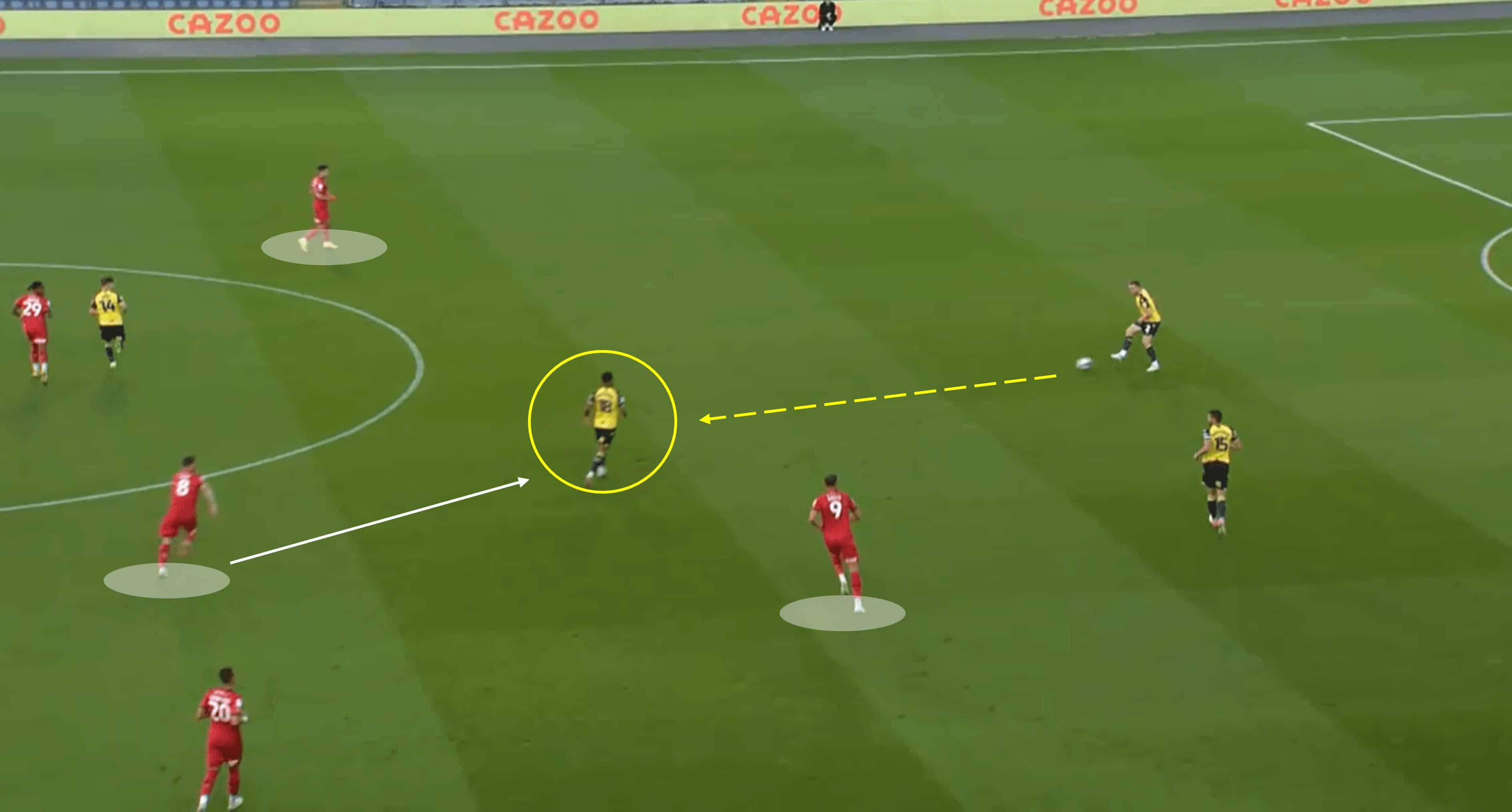
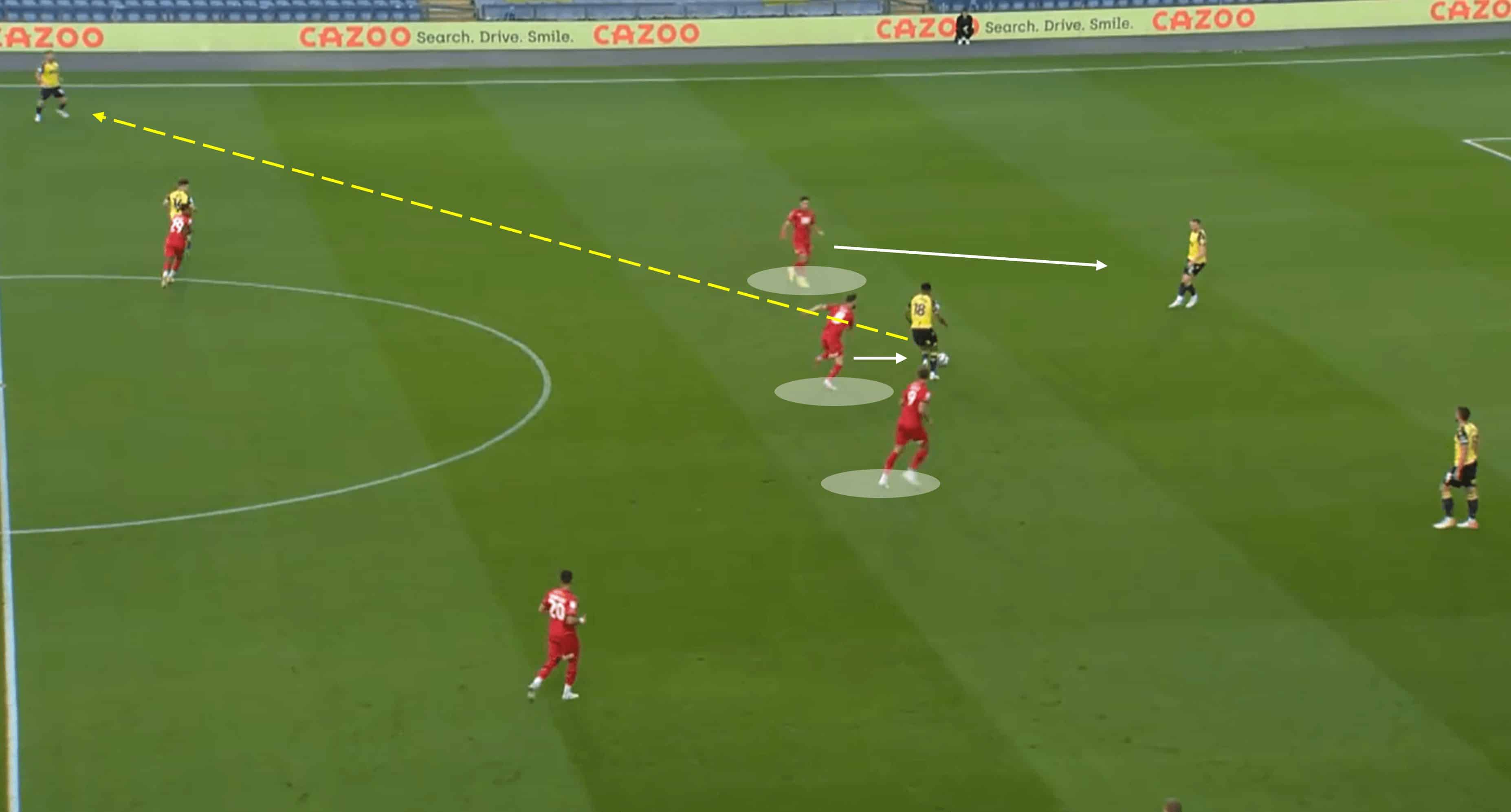
This final example of Leyton Orient’s press gives us another case of their understanding of Wellens’ tactics, but also highlights a small detail that would fall into the category of “room for improvement”. The first image shows the opposition defender playing a pass into his teammate in midfield – an already risky move given the heavy Orient presence in the centre. Craig Clay is the O’s man who recognises this danger and wastes no time in putting in the press, forcing the opposition backwards after his first touch.
From there, Clay is joined by Harry Smith (who has since left the club to join League One outfit Exeter City on loan), and Paul Smyth from the left flank. Smith’s positioning isn’t at fault, and since the man on the ball is facing the other way, Smith’s involvement was purely insurance. Smyth’s positioning, however, leaves a small gap that allows the opponent to play a clever pass out to the right flank, relieving the pressure and danger. While this is clever play from the midfielder, Smyth could’ve prevented that by simply scanning around and adjusting his position slightly.
Out of possession: defensive midfielders
Credit where it’s due, Wellens seemingly has his team well-drilled in many key departments of the game. One impressive feature is visible when the opposition half the ball, and it is one small detail that makes a large defensive contribution. We will dissect it in the analysis below, but what you will see is how Orient adjust to a shape that mirrors a 4-2-3-1 one shape – emphasis on the “two” unit, as the midfield takes up a shape that gives them more defensive structure and stability.
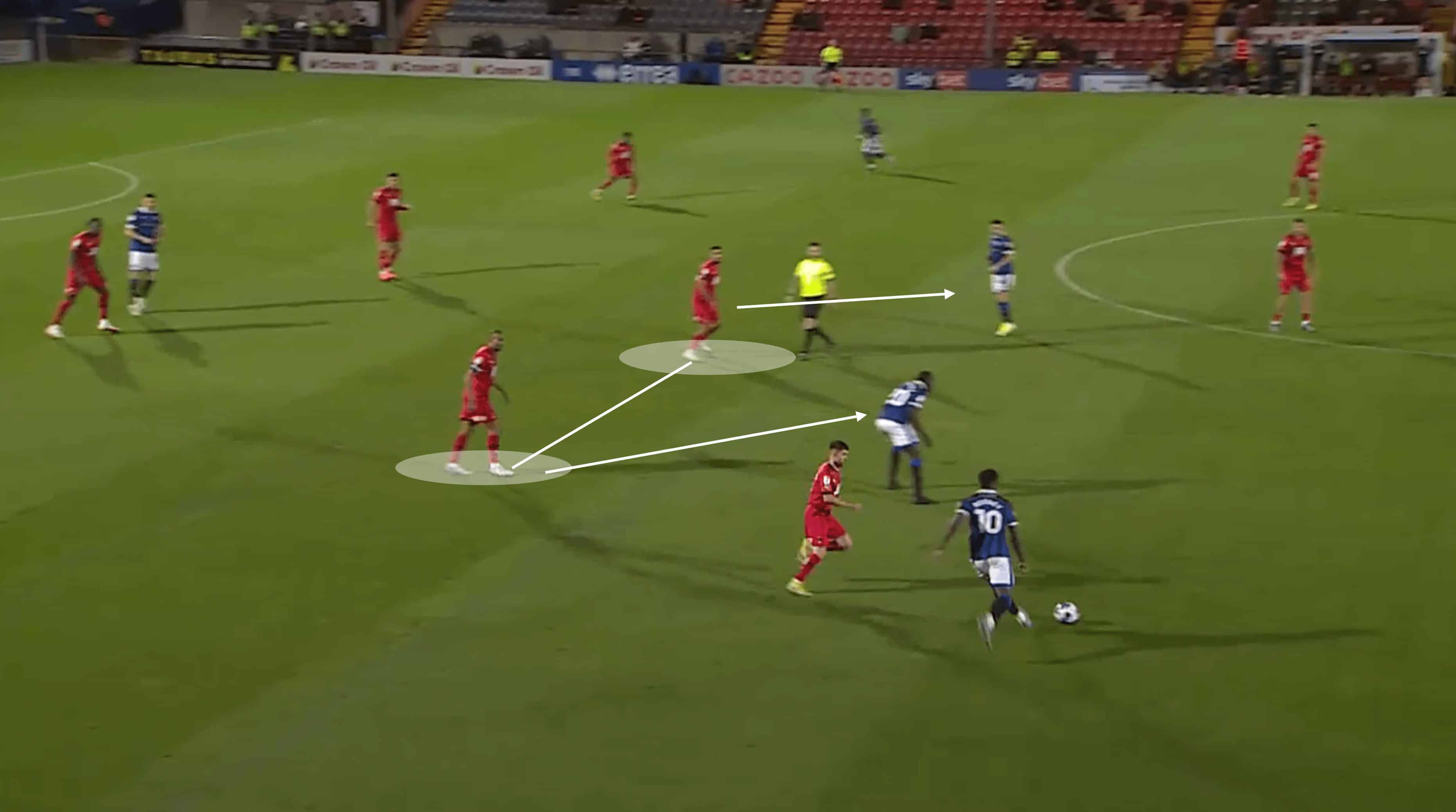
This is a typical example of the set-up they would adopt until they get the ball back. As mentioned earlier in the report, they have been seen to play a 4-2-3-1 formation from time to time this season, but even when they play 4-3-3 or otherwise, we see this transformation into the two defensive midfielders. Their width and depth depend on the game situation and the location of the opponent’s possession.
For example, in the analysis above, the opponent has the ball in a more central position, close to the halfway line, so Pratley and El Mizouni have just a few yards between them, and they are pushed slightly higher than they would be if the opponent had the ball in a wider, more threatening position. They are also in good positions on standby, ready to press the two opposition midfielders if they were to receive the pass. This limits the options for the enemy number 10, who, on this occasion, opts for a hopeful switch ball to the right flank, where the ball is intercepted by Sweeney at left-back.
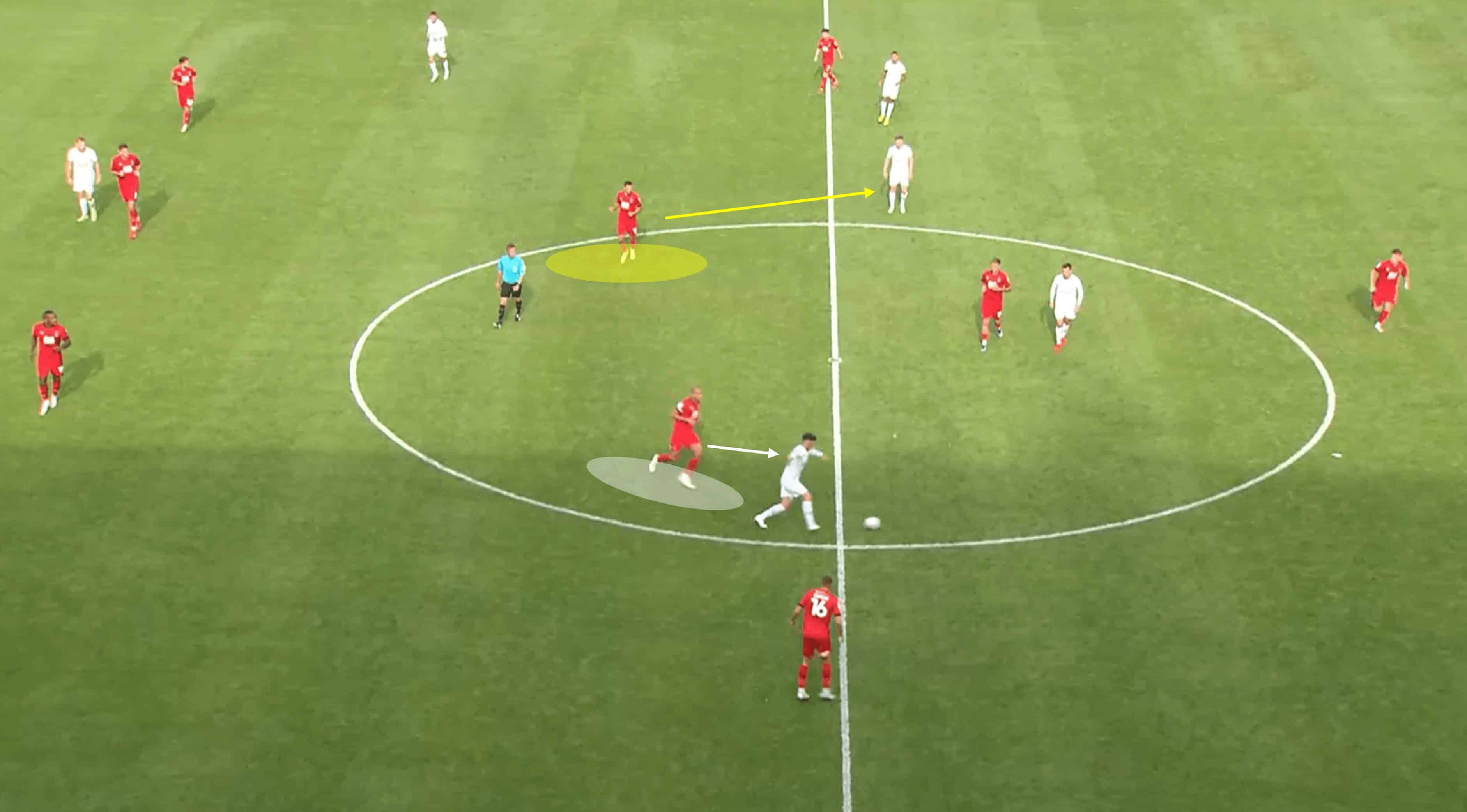
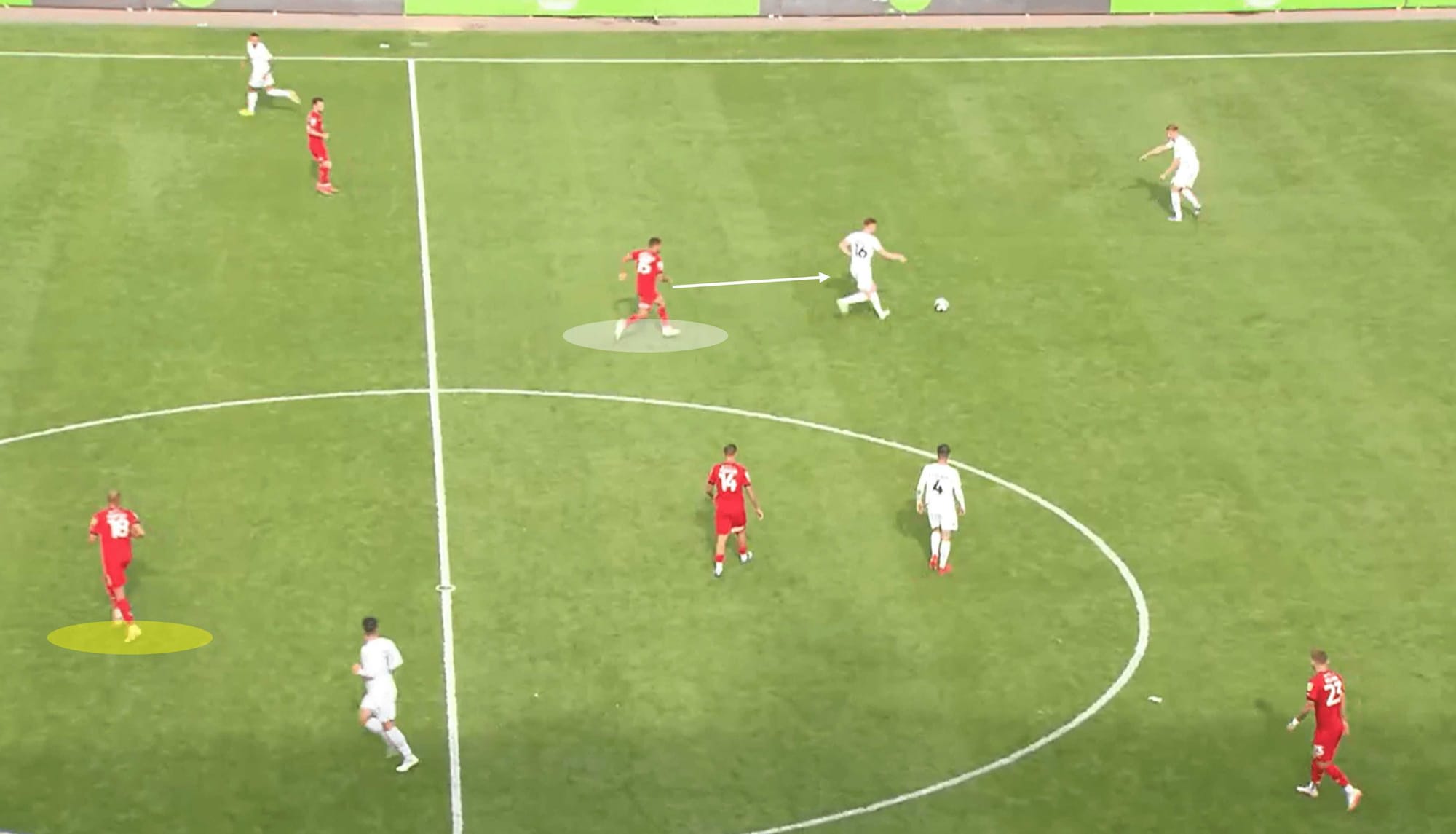
Having just discussed Orient’s pressing, this example is extremely relevant. It also shows a partnership between Pratley and El Mizouni that contains a great deal of understanding between the pair. In the first image, the opposition midfielder on Pratley’s side has the ball, so the veteran applies the press and forces the sideways pass. El Mizouni is already in a good position to apply pressure to his man if it became necessary.
This results in the ball being with the midfielder on El Mizouni’s side, who similarly applies high pressure, forcing another quick pass. Pratley sits behind, providing depth and protection. It is interesting to see what is almost like a pendulum-style press between the two, and when you see the footage of this moment, you see how smooth it is – further highlighting the chemistry between the two.
Conclusion
Leyton Orient haven’t fluked their way to a strong start in League Two. They didn’t go 10 unbeaten and set a new record by luck. It appears that Richie Wellens has fine-tuned his coaching & managing and it is being reflected in his team’s tactics and performances.
While the defeat to Newport showed that there is a chink in the armour and that the O’s aren’t invincible, their style of play both in and out of possession shows a clear tactical identity that is producing strong performances and good results. From their ability to play fluidly through the midfield thanks to good movement and creativity, to their hard work out of possession, they are proving to be an extremely difficult team to beat, and we should expect them to be amongst the promotion contenders come the end of matchday 46.
The squad really seem to have bought into Wellens’ vision and it is so far paying dividends.

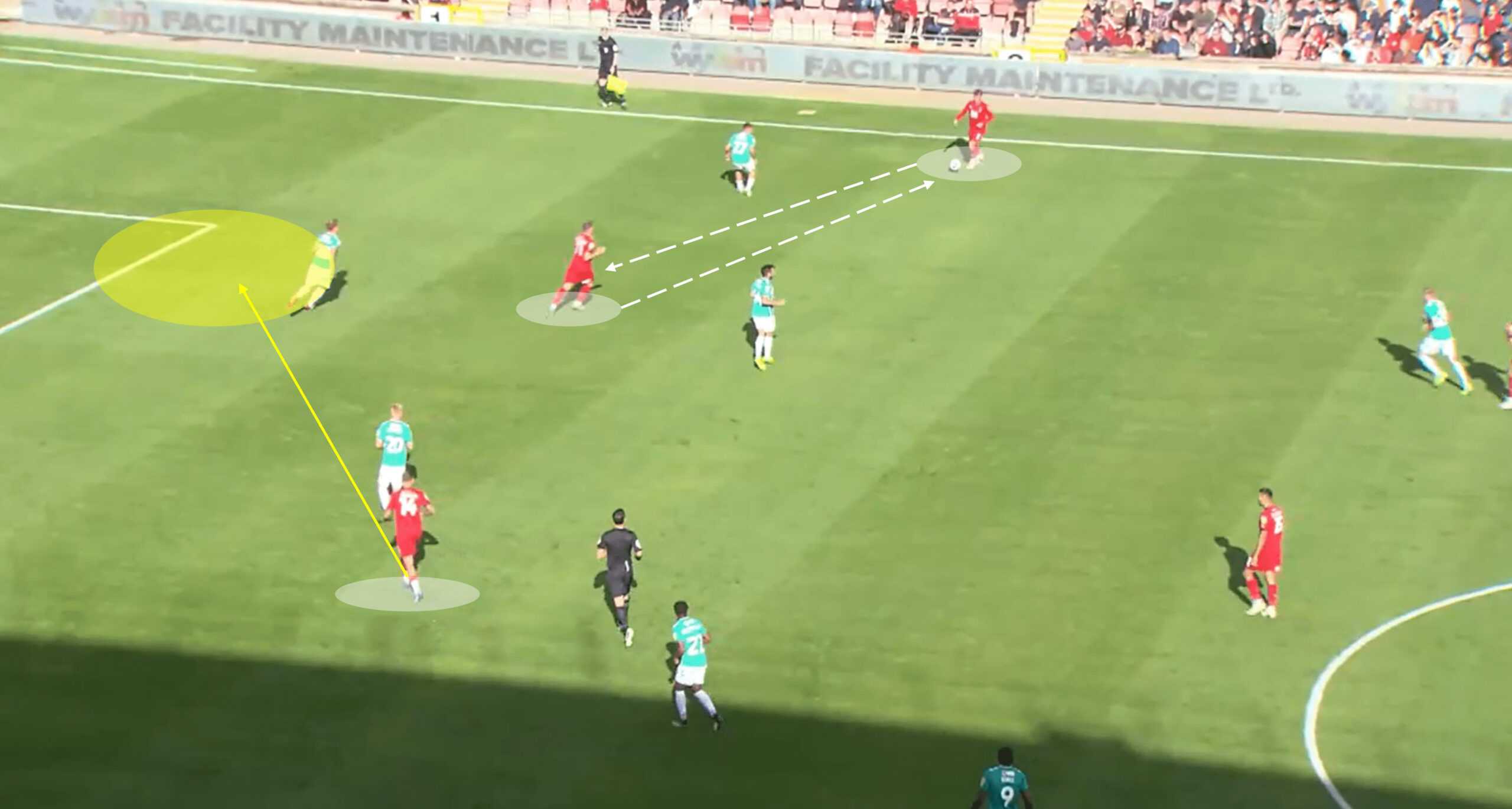




Comments